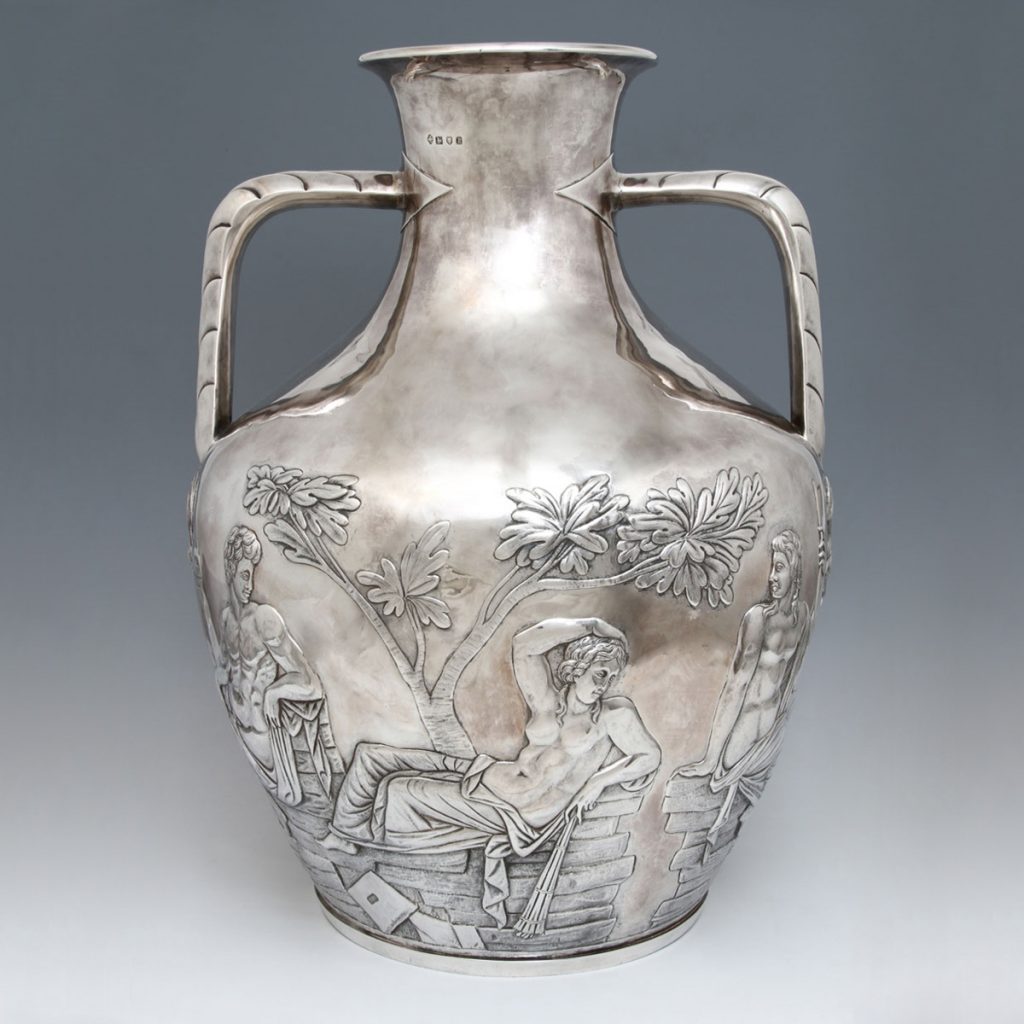Portland Vase is a Roman amphora from the 1st century AD, currently on display at the British Museum in London. Its designation is associated with the Dukes of Portland, family in whose collection this piece remained between 1785 and 1945.
In 1845 the piece was deliberately damaged by a visitor to the Museum, breaking into 125 fragments. The restoration process took 5 months.
Its iconography possibly portrays the marriage of Peleus, hero of Greek mythology, with Tethys, a sea nymph. This union resulted in the birth of the famous Greek hero Achilles, who led the Greek armies in the siege of Troy.
Portland Vase is a piece made of cameo glass, a technique in which vessels and plaques, either free-blown or cast, are created with two or more layers of glass and decorated through carving.
During the 19th century, silver replicas of this piece were made, this being the only one known of these dimensions.
The piece that is part of the J. Baptista collection was made by the British jewellery house Hancocks & Co. Founded in the mid-19th century, it was notable for the creation of the Victoria Cross medals, the highest military decoration awarded for bravery to members of the armed forces of the various countries that make up the Commonwealth.
In August 1849, after only eight months on the market, Hancocks received a Royal Nomination from Queen Victoria. Many of Europe’s top sovereigns also became its regular patrons.
The House participated in several international exhibitions, including the 1851 Grand Exhibition at the Crystal Palace, in London, as well as Paris (1867) and Vienna (1873), having received several medals of excellence.
Discover the large silver replica of this piece in the J. Baptista collection.



